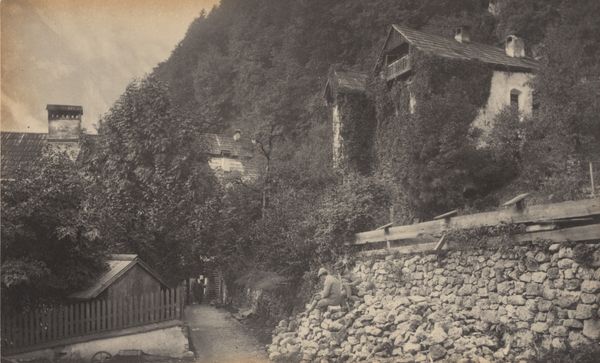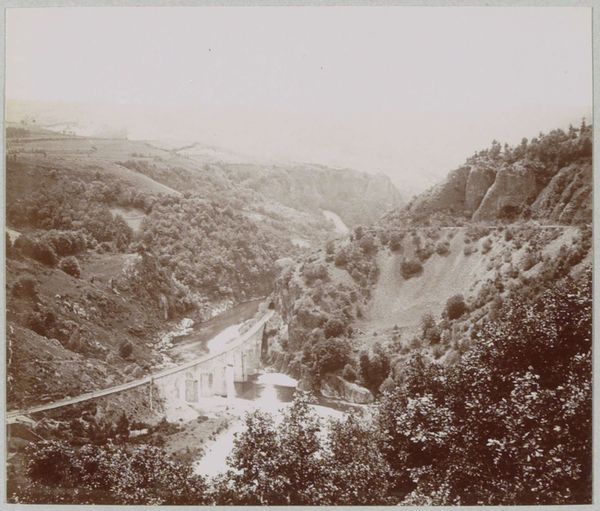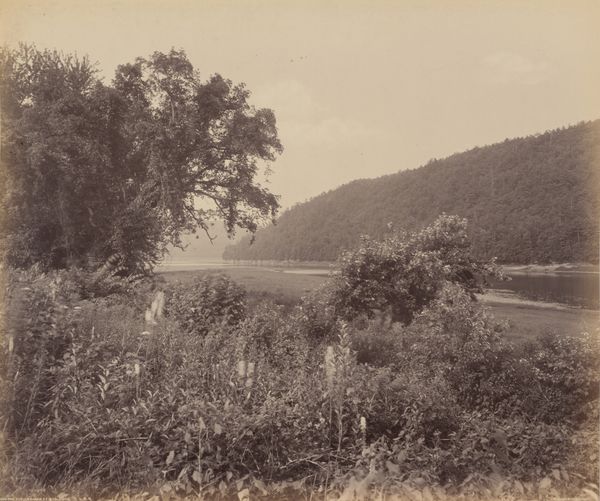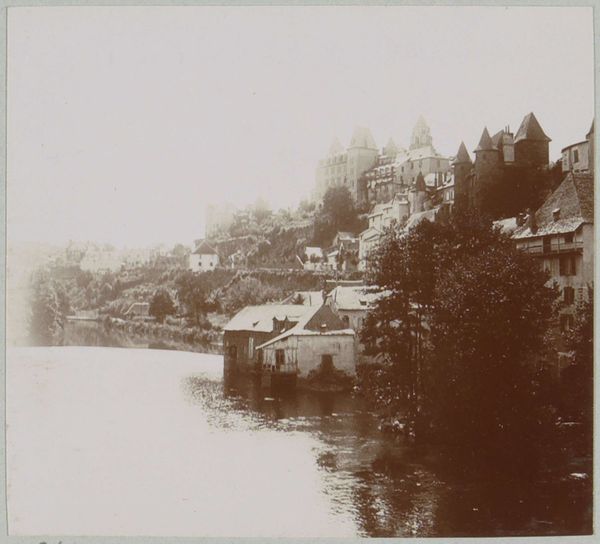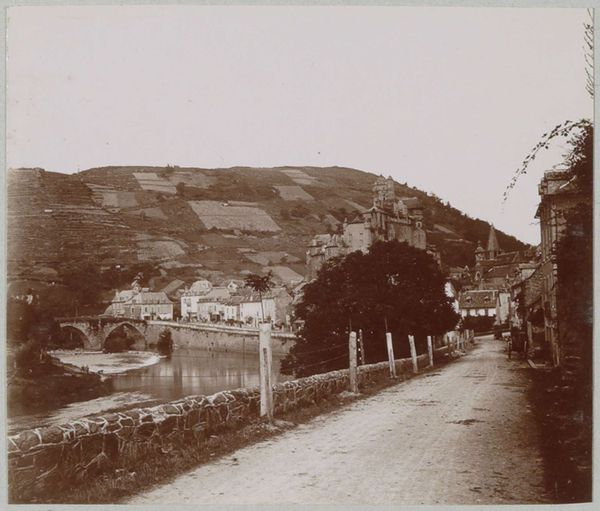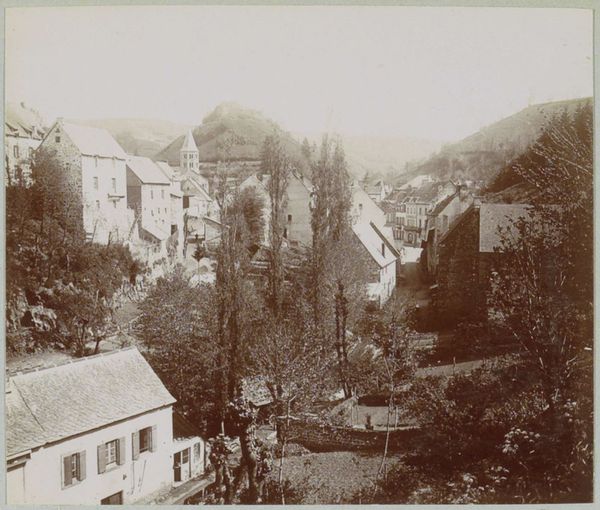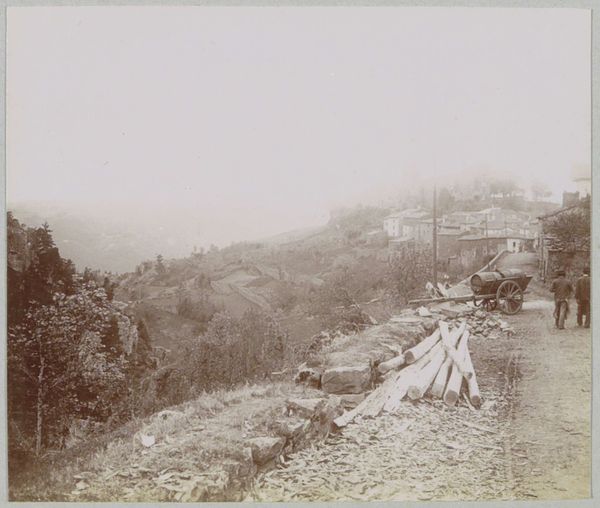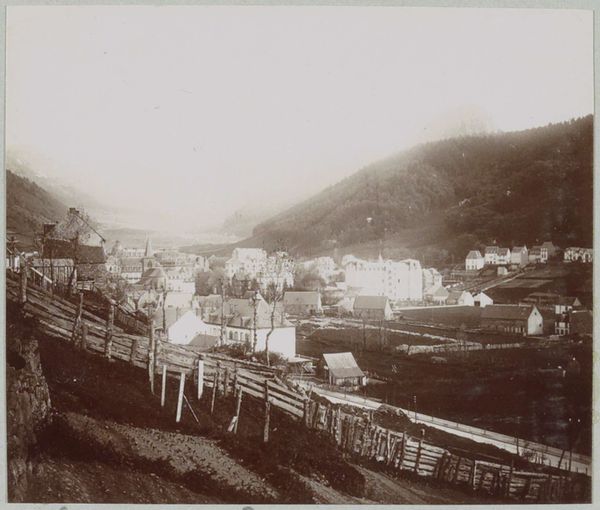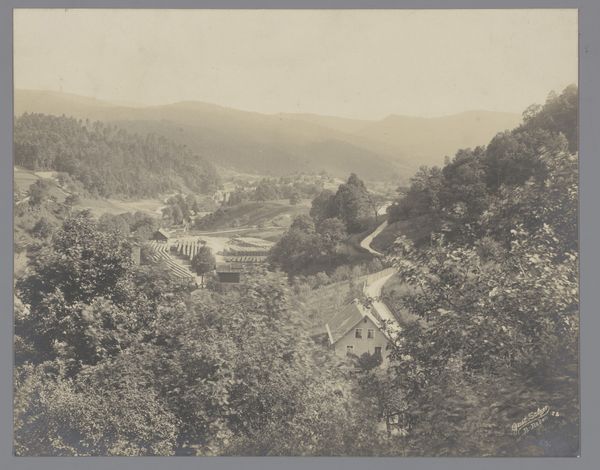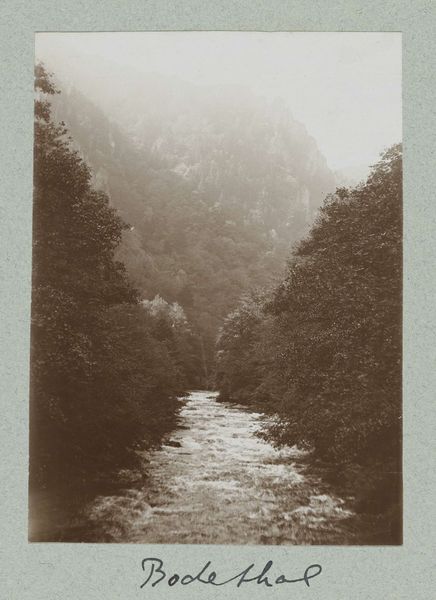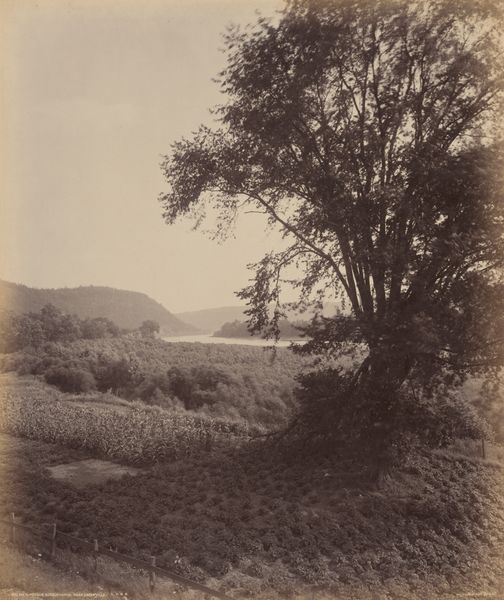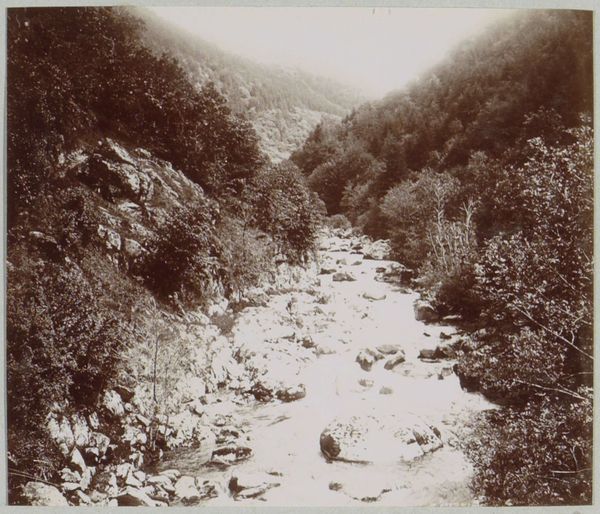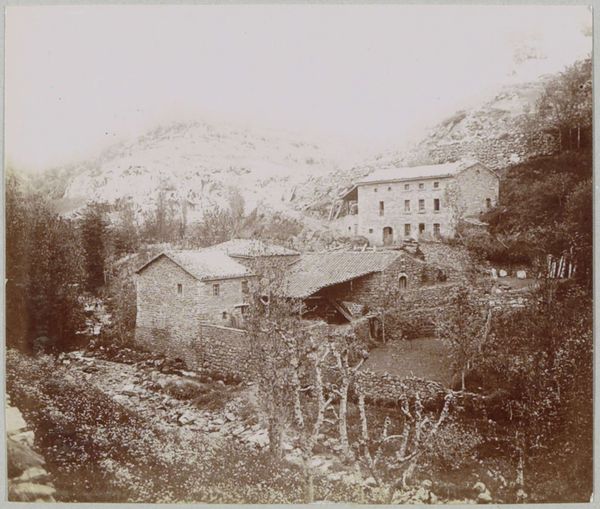
Dimensions: 4 x 5 1/4 in. (10.16 x 13.34 cm) (image)5 5/8 x 7 3/8 in. (14.29 x 18.73 cm) (mount)
Copyright: Public Domain
Editor: Here we have Josef Maria Eder's "Kirchberg an der Pielach," an albumen print from 1882, housed right here at the Minneapolis Institute of Art. There's something so tranquil about this scene. I am really drawn to its rustic quality; can you elaborate on your interpretation? Curator: This landscape photograph offers more than just tranquility; it is important to see it within the context of burgeoning industrialization of the late 19th century. Landscape photography like this becomes a powerful tool. How might we see it as a counter-narrative to that rapid societal shift? Editor: So you are saying it romanticizes a way of life that was already disappearing? Curator: Exactly. Think about the concept of the picturesque and its popularity during this period. Eder carefully composes this image, obscuring any evidence of modern development and highlighting the "natural" harmony of the watermill and landscape. Consider how this idealization might gloss over the difficult realities of rural labor and economic disparities of the time. Editor: That’s interesting. I had been focusing on the beauty, but now I’m thinking about what it leaves out, a constructed ideal. It's also interesting how the placement of the waterfall itself is right in the center, as a symbol for how central nature and the area were. Curator: Precisely! The print process itself, albumen, has an inherent warmth that contributes to this romanticized view. Ask yourself, who was this image intended for, and what purpose did it serve? Editor: That’s a lot to think about. Thanks, that perspective really adds a new layer of meaning. Curator: Absolutely, thinking about art and its broader contexts helps us engage critically. Hopefully we can revisit the work soon!
Comments
No comments
Be the first to comment and join the conversation on the ultimate creative platform.
